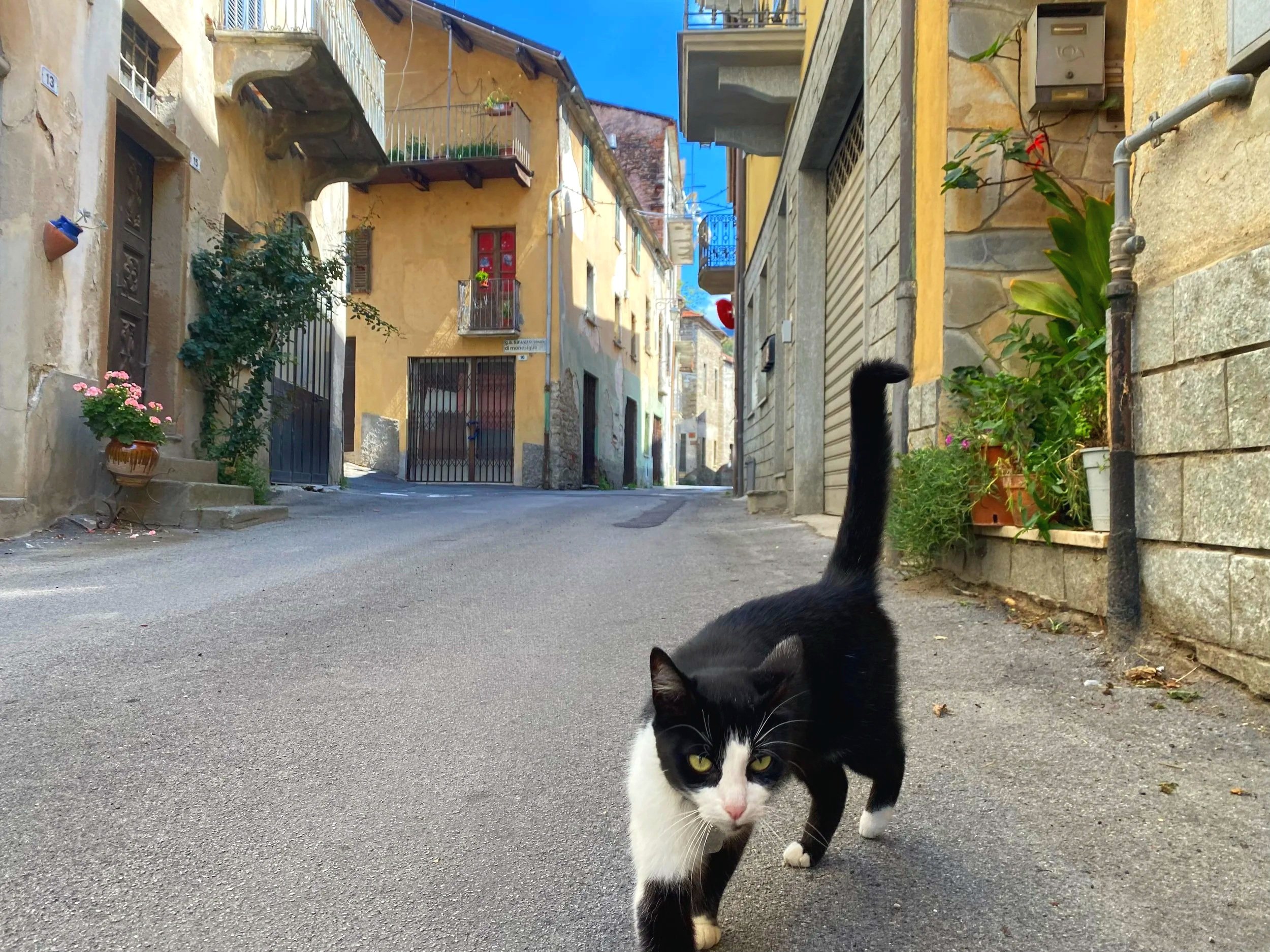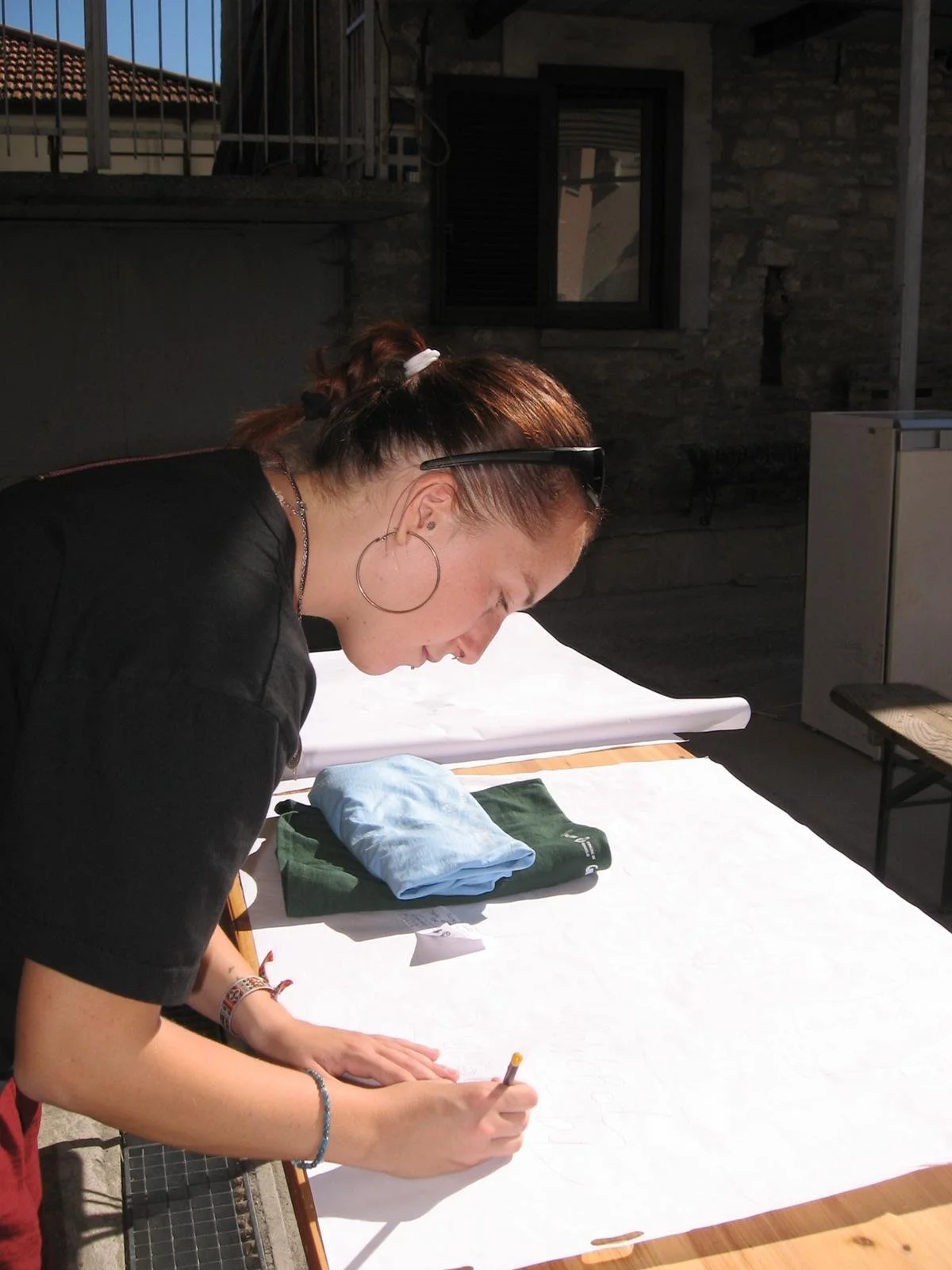Due Settimane tra Feste, Progetti e Nuovi Inizi a Monesiglio
August 25-September 7
Eccomi di nuovo, sono Ebru. Mi siete mancati (tutte e quattro le persone che leggono questo blog). Riguardo alla settimana… ho coccolato e miagolato un bel po’ con Jisoo, il gatto più amichevole di Monesiglio. Le giornate scorrevano tranquille come sempre… finché non è arrivata la festa di compleanno di Natália.
L’abbiamo festeggiata nel giardino del castello di Monesiglio e ci siamo divertiti un sacco. L’atmosfera e l’ambientazione erano belle quanto Natália. Se non mi credete, guardate le foto.
La settimana successiva abbiamo pulito l’ostello, perché avevamo ospitato alcuni visitatori nei giorni precedenti. Mentre pulivamo ascoltavamo Sabrina Carpenter, che ha reso tutto un po’ più divertente — per quanto possa esserlo pulire. Poi abbiamo avuto il nostro Speaking Club settimanale, che secondo me è sempre uno dei momenti migliori della settimana.
Ultimamente ci stiamo concentrando anche sulla scrittura dei progetti. Come primo passo abbiamo individuato i problemi del paese e della comunità. Per lavorarci sopra abbiamo imparato e usato diversi strumenti, e poi abbiamo fatto un meeting per fare brainstorming.
Ed ecco arrivare il Bergolo Fest! Abbiamo aiutato con le decorazioni — tra cui un drago dorato d.i.y. — con le pulizie, l’allestimento e il servizio. Durante il festival ci sono stati un laboratorio di percussioni, uno spettacolo di fuoco, un concerto rock e un concerto africano.
Dopo il Bergolo Fest non volevamo perderci Gorzegno Magica, quindi abbiamo allacciato le cinture e siamo andati a Gorzegno per una serata… magica. Un concerto jazz davanti al castello, bancarelle di cartomanzia lungo la strada, negozi di arte sciamanica… era incantevole.
-Ebru
E per finire, abbiamo accolto la nostra nuova splendida volontaria, Noa. Dai Noa, vieni a prendere il microfono! (Noa afferra il microfono. Il pubblico applaude.)
Piacere di conoscervi. Sono Noa. 😊
Vengo da Barcellona e prima di arrivare qui stavo viaggiando per la Spagna e guadagnando qualche soldo. È da tanto che ho iniziato a viaggiare da sola per trovare il mio posto e conoscere meglio me stessa. È per questo che ho iniziato il mio volontariato la settimana scorsa, qui a Monesiglio, e ho deciso di vivere questa nuova esperienza.
Il primo giorno io e gli altri volontari siamo andati in ufficio e abbiamo trascorso la giornata lì, facendo compiti tranquilli. Nei tre giorni successivi abbiamo collaborato a un festival a Bergolo, un paesino molto carino e molto piccolo della zona, e ho conosciuto nuovi volontari. Mi è piaciuto tantissimo stare lì perché ho avuto una bellissima connessione con loro, e ho adorato le attività creative che facevamo insieme per dare vita al paese.
Oggi, dopo due giorni liberi per riposarci, sto scrivendo questo dall’ufficio per condividere con voi un pezzettino della mia esperienza. Mi sento stanca, ma anche emozionata per tutto quello che stiamo facendo e per quello che arriverà.
Spero che anche la vostra giornata sia bella. A presto, e restiamo in contatto!
-Noa









